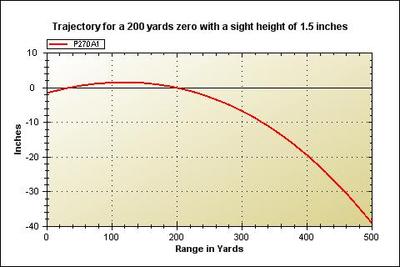Stillakid2’s previous post got me thinking  …I assume that see-thru-mounts are less accurate than mounts closer to the barrel correct?
…I assume that see-thru-mounts are less accurate than mounts closer to the barrel correct?  I have see thru on my 30.06 and have been passing on the 200 yard shots that presented themselves this past year due to not being confident on that long of a shot while my 3 X 9 wideangle Redfield scope is mounted on see thru rings. I am on at 100 yards but wonder if I switch mounts if I will be more confident in those 200-250 yard shots? Thanks! RR
I have see thru on my 30.06 and have been passing on the 200 yard shots that presented themselves this past year due to not being confident on that long of a shot while my 3 X 9 wideangle Redfield scope is mounted on see thru rings. I am on at 100 yards but wonder if I switch mounts if I will be more confident in those 200-250 yard shots? Thanks! RR
Inactive
The "IGH"...
Posts: 2092
December 7, 2008 at 3:18 pm
#209953
 )… A Rem LSS in .280 Rem with a 4.5X14X42 for open/long range hunting. A Rem Model 7 in 7mm08 with a 1.75X6X40 for heavier cover like the U.P. and northern WI and Minn offers.
)… A Rem LSS in .280 Rem with a 4.5X14X42 for open/long range hunting. A Rem Model 7 in 7mm08 with a 1.75X6X40 for heavier cover like the U.P. and northern WI and Minn offers.

